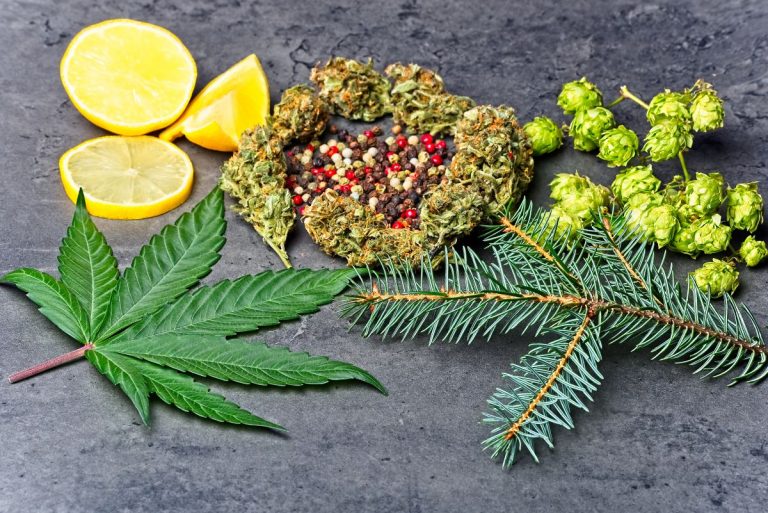Terpenes and Cannabinoids - Part 2

In the second article in this series, we dig a bit deeper on the compounds making up our favorite plant
This is the first part of our series on endocannabinoids found in Cannabis. Did you know Terpenes were found in oranges and lemons? Check it out (description for visual)
The cannabis plant contains over 100 different kinds of chemical compounds, called cannabinoids. Tetrahydrocannabinol (THC) and cannabidiol (CBD) are the two best-known cannabinoids, but there are many others that play important roles in the plant’s effects on the human body. In this series, we’ll take a closer look at some of these other cannabinoids, starting with terpenes.
What are Terpenes?
Terpenes are a type of compound that is found in a variety of plants, including cannabis. They are responsible for the unique smell and taste of different cannabis strains. Terpenes can also have various effects on the body, depending on the specific strain. Some terpenes are known to provide pain relief, while others may help to improve mood or reduce anxiety.
The Different Types of Terpenes
There are many different types of terpenes, and each one has its own unique benefits. For example, some terpenes can help to relieve stress and anxiety, while others can boost energy levels.
Some of the most popular terpenes include linalool, which has a floral scent; limonene, which has a citrusy smell; and myrcene, which has a spicy or musky scent. Each of these terpenes offers different benefits. For instance, linalool is known for its relaxation-inducing properties, while limonene is known for its energizing effects. Myrcene, on the other hand, is known for its ability to reduce inflammation.
There are many other types of terpenes in addition to these three. Some of the less common ones include pinene, which has a piney smell; humulene, which has a woody smell; and caryophyllene, which has a peppery smell. Each of these terpenes provides its own unique benefits.

What Foods Contain Terpenes?

There are a variety of foods that contain terpenes. Some of the most common terpene-containing foods include fruits, vegetables, herbs, and spices.
Fruits and vegetables such as oranges, lemons, grapefruits, limes, tomatoes, and carrots are all high in terpenes. Herbs and spices such as basil, rosemary, thyme, and peppermint also contain significant levels of terpenes.
In addition to being found in many common foods, terpenes are also present in essential oils. Essential oils are concentrated forms of natural oils that are extracted from plants. Some of the most popular essential oils that contain terpenes include lemon oil, lavender oil, and peppermint oil.
Uses of Terpenes
Terpenes are compounds found in plants that give them their unique smell and flavor. They are also found in cannabis, and they can have various effects on the body. Some people believe that terpenes can improve the effects of cannabis, while others think that they can make the effects more intense.
They can make the effects of cannabis more pleasant and enjoyable. They can also help to mask the taste and smell of cannabis, which some people find unpleasant.
Terpenes are found in many different plants, including cannabis. They are also found in some fruits and vegetables. Citrus fruits, such as lemons and oranges, contain high levels of terpenes.
Some terpenes are used in essential oils. These oils are used for aromatherapy and can be found in health food stores.
Terpenes are also used in the production of perfume. Many commercial perfumes contain terpenes.
Conclusion
Terpenes are a fascinating class of compounds that are responsible for the unique aromas of plants. They also have a variety of potential health benefits, which is why they are often used in dietary supplements and natural medicines. In the cannabis plant, terpenes play an important role in the effects of different strains, which is why it is important to choose a strain with the right combination of terpenes for your needs. I hope this article has helped you to understand a little more about terpenes and their potential benefits. If you would like to learn more about cannabinoids and other compounds in the cannabis plant, be sure to check out our other articles in this series.










